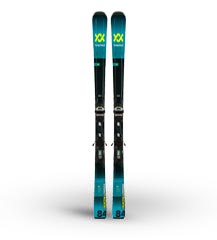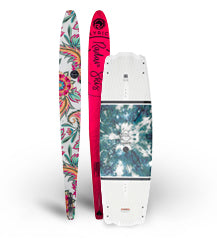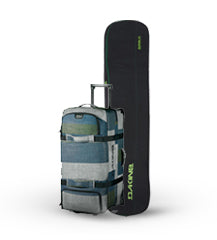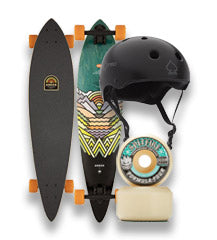Mens - Ski Gloves
Men's Snow Ski Gloves & Mittens
When visiting the snow, gloves are a necessity, but each person has different requirements. Because of this, we have a wide variety of ski gloves, mittens, and liners available at Auski from renowned brands including Kjus, Reusch, Swany and XTM. The appropriate ski glove can range from low-profile park gloves for warm bright days to substantially insulated gloves for the coldest days. Talk to our knowledgeable staff to get assistance choosing the ideal combination! We provide both men's and women's ski gloves! No matter the style, waterproofness level, or level of warmth you require—whether you're skiing, snowboarding, touring, or just having fun in the snow—we have something to offer.
How to Choose Ski Gloves
Prior to going shopping for gloves and mittens, think about what you'll be doing. In order to keep your hands warm in chilly, wet circumstances, most downhill ski gloves and mittens are manufactured with synthetic exteriors, frequently nylon, along with a waterproof, breathable barrier and some form of insulation. For sports like skiing and snowboarding, abrasion-resistant patches on the fingers, knuckles, and palms increase durability. Cross-country skiing, on the other hand, is a very aerobic activity that will probably make you sweat. Cross-country gloves are flexible, breathable, and make it easier for sweat-derived moisture to evaporate. Consider qualities like insulation, waterproofness, dexterity, and touch-screen compatibility once you know how you'll be using your gloves or mittens.
Ski Gloves Vs Mittens
Ski Gloves are preferable for activities where you regularly need to handle equipment, tighten boot buckles, and zip zippers because they include individual fingers, which provide more dexterity than mittens. For cardiovascular sports like cross-country skiing, where your body produces a lot of heat, lightweight gloves are a terrific option. Despite using the same materials, mittens are warmer than gloves because, unlike with gloves, your fingers may share warmth. Additionally, the surface area of mittens makes it harder for body heat to escape. They aren't as dextrous as gloves, but you can still benefit from wearing them whether using ski poles, snowboarding down a mountain, or going on a trek in the bitter cold. Some producers create a hybrid glove and mitten by combining your ring and pinky fingers with your index and middle fingers. If you've found that mittens seem too bulky and that gloves aren't warm enough, these are a perfect alternative. Many producers provide three-in-one gloves and mittens, which feature a removable liner glove or mitten within the main glove or mitten. These 3-in-1 gloves are adaptable and let you wear the shell and liner separately in warmer weather or together for optimal warmth. When handling equipment, liner gloves provide outstanding dexterity without exposing your skin to the elements. A 3-in-1 glove or mitten system is available as a whole or you can build your own by purchasing different shells and liners.
Waterproof Ski Gloves & Insulation in Ski Gloves and Mittens
In most cases, down and synthetic insulation are employed in gloves and mittens. Down is highly valued for being light, portable, durable, and breathable in addition to being an excellent insulator. While down is more expensive than synthetic, it retains its loft longer, making it a better long-term value. Down is not as frequently used in gloves and mittens as synthetic insulation since it loses its effectiveness as insulation when it gets wet. When it is in use, a waterproof shell usually keeps it dry by protecting it. In cold, dry conditions, down gloves and mittens make a great choice for skiing and snowboarding. In addition to being less expensive than down, synthetic insulation dries more quicker and insulates even when wet. Particularly in humid conditions, it is a smart choice to use while skiing, snowboarding, and playing in the snow. The drawbacks of synthetic insulation include the fact that it provides somewhat less warmth for its weight, is a little heavier than down, and loses some of its insulating capacity when compressed. Synthetic insulation is used in the majority of snowboard, cross-country, and downhill ski gloves.








